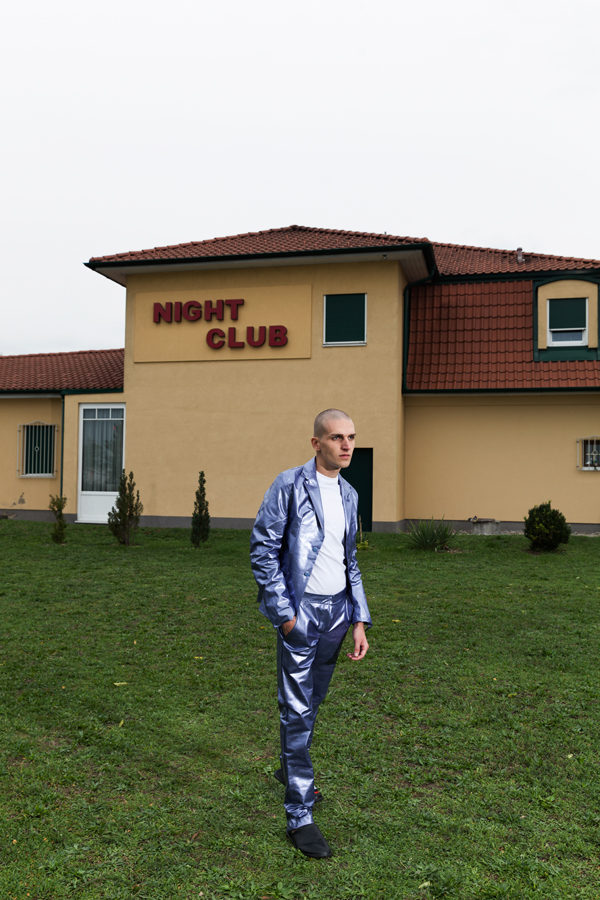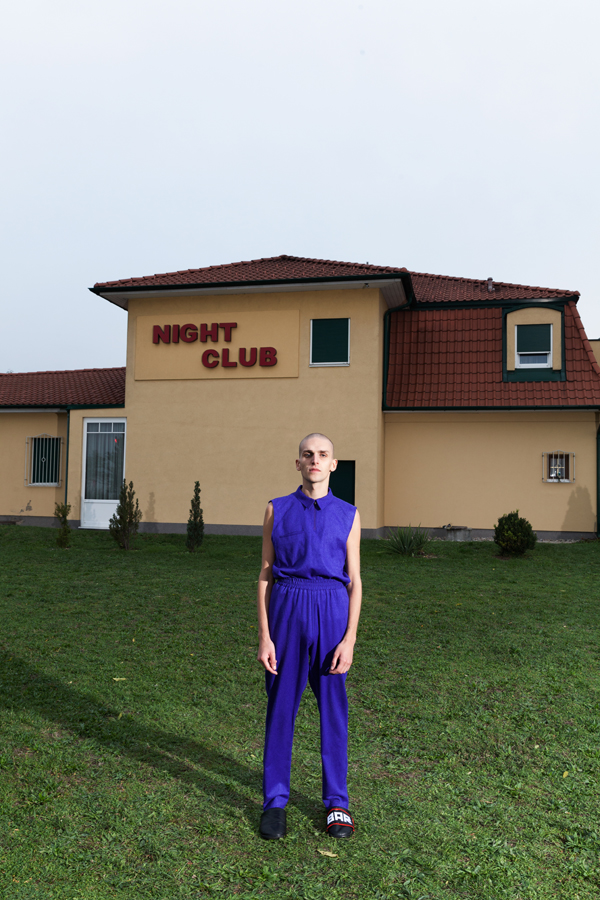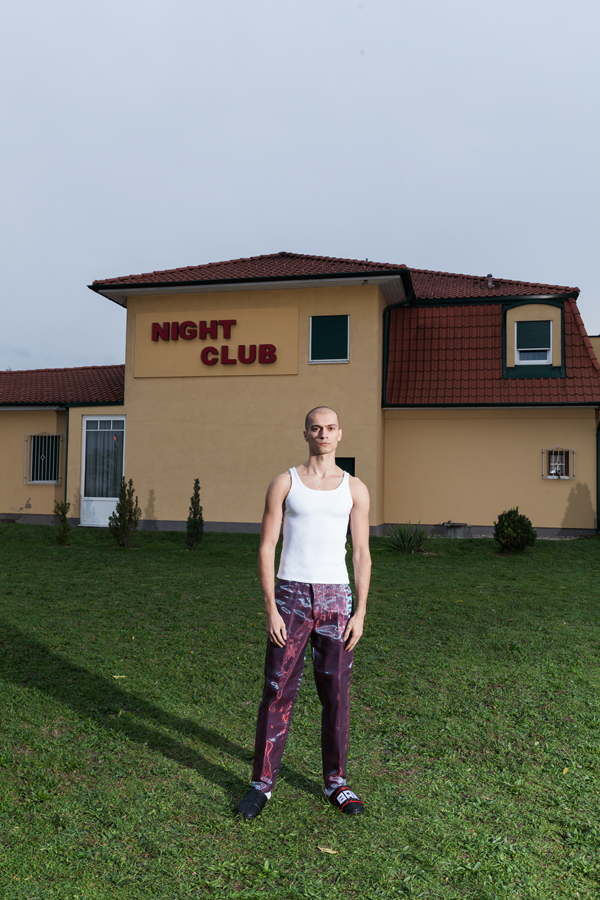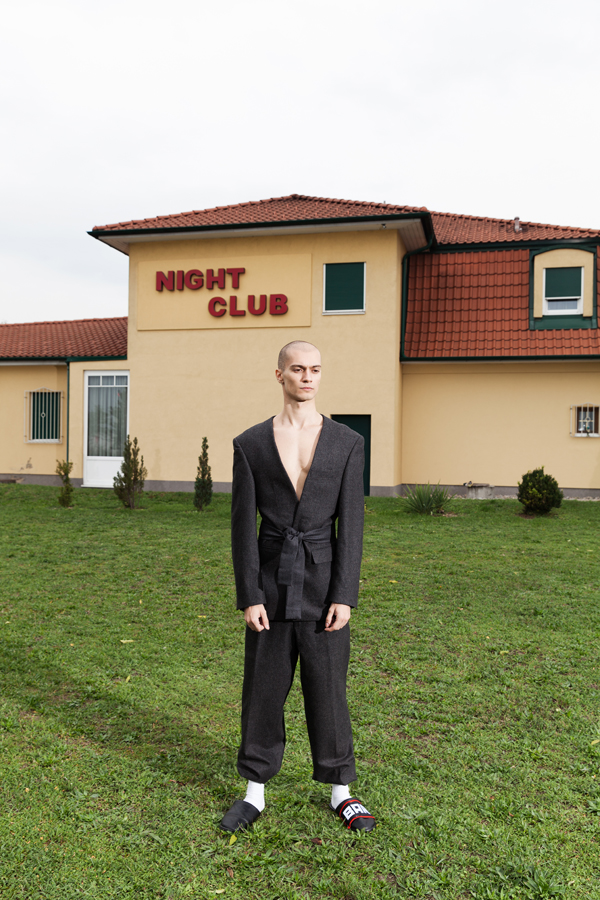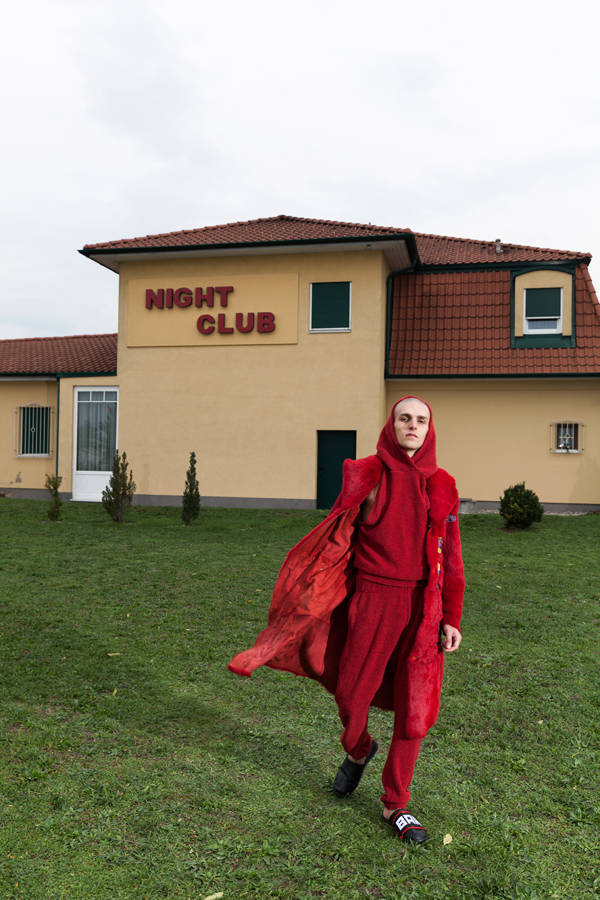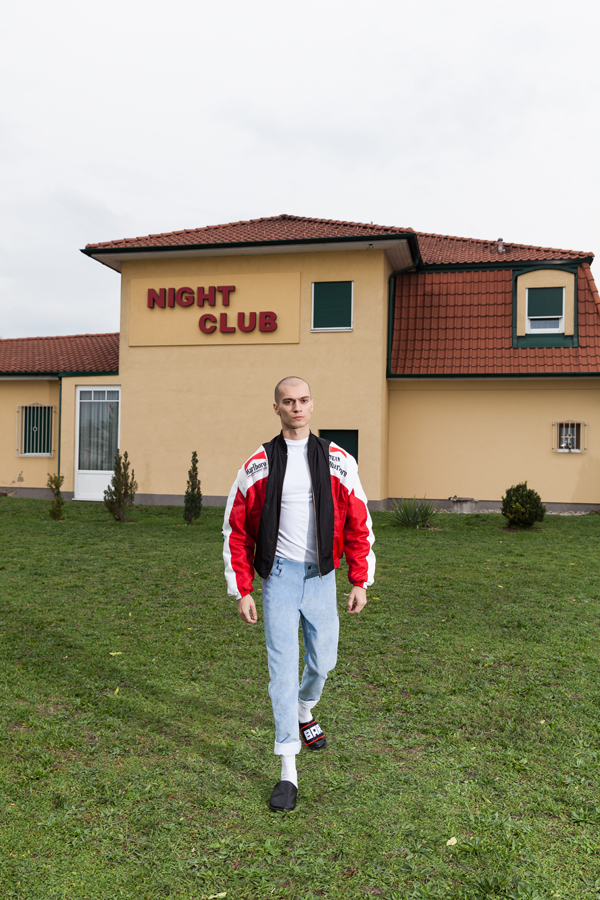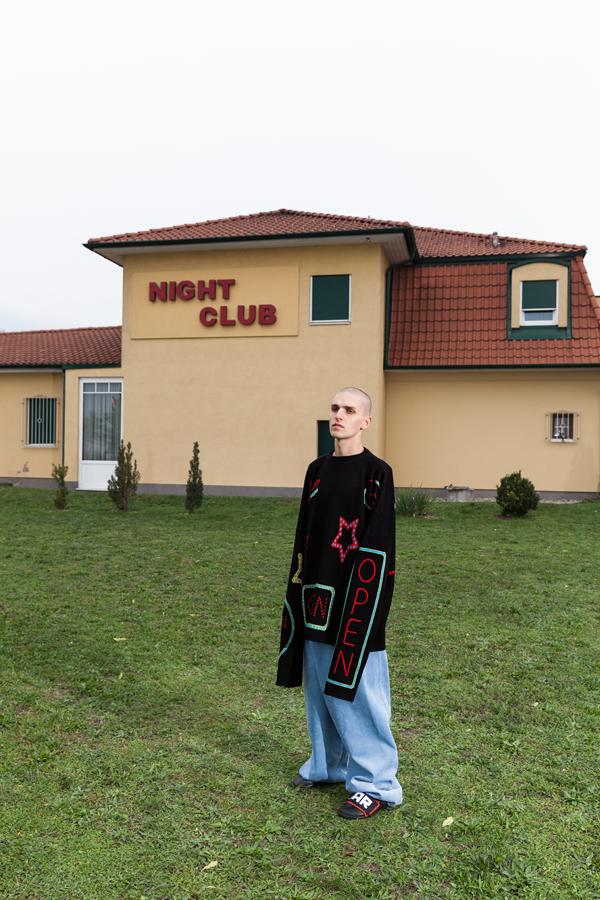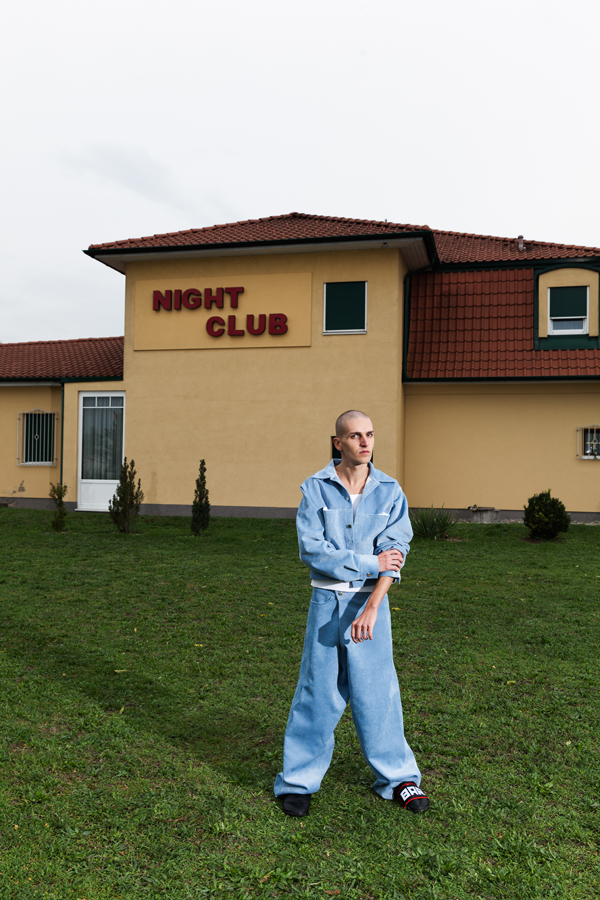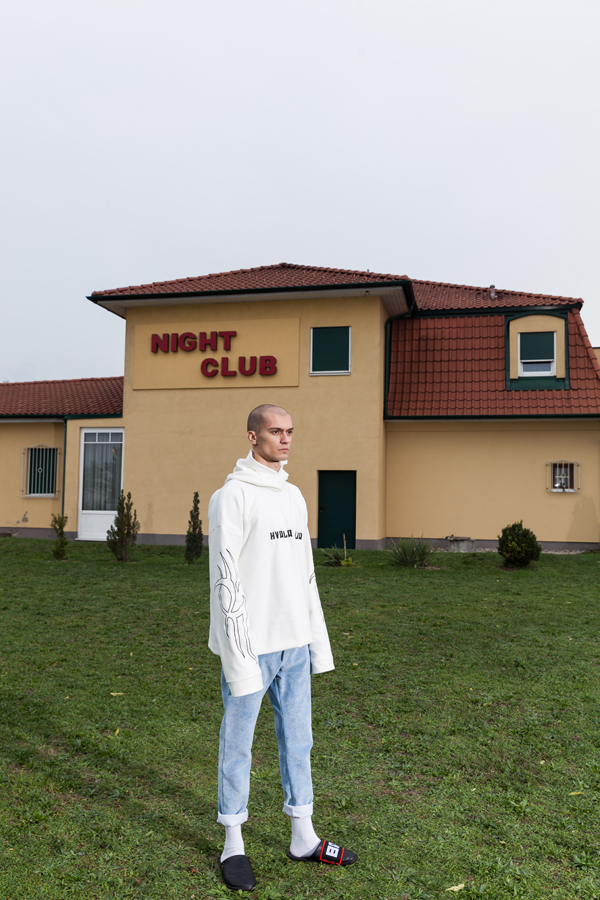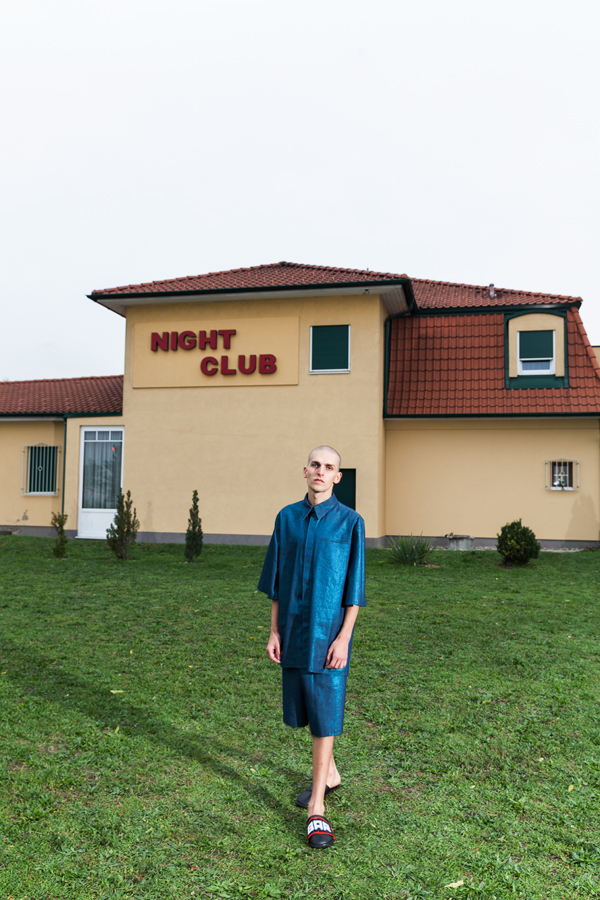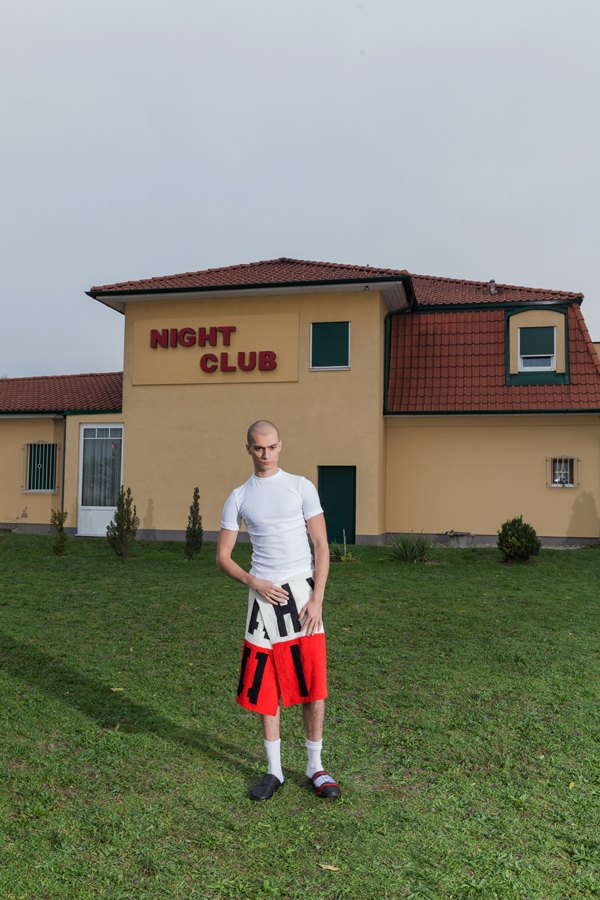The new macho: meet the Bosnian fashion designer rethinking Balkan masculinity
Ilija Milicic moved from Bosnia to Vienna to pursue a career in fashion, and worked under cult designer Hussein Chalayan before starting his own brand, Hvala Iija. Now he's exploring the stereotype of eastern European men to find the soft side of macho style
In the glow of multicoloured neon signs, raindrops are sparkling on the windscreen of a car. In a deserted strip-bar bathed in red light, a guy with a shaved head is smoking cheap cigarettes and gazing at the woman dancing before him, wearing nothing else but fake eyelashes. This is just a glimpse at the world of Hvala Iija, a project by Bosnian designer Ilija Milicic. It draws on the ostracised and secret, the feared and enchanting universe hidden deep beneath the fabric of the city. In the current political climate, the media often exploit fear of the outsider, eastern Europeans being one of the frequent archetypes. Paradoxically, this innate fear is one of the reasons why the so-called post-Soviet aesthetic has seen such stellar rise in fashion in recent years. Milicic is adding something new and unseen to the narrative by exploring the heritage of Balkan culture and the immigrant’s state of mind — and finding unexpected beauty and romanticism in its darkest corners.
“This is a story of broken-hearted macho men — only subverted and transformed”
Originally from a village located in the north of Bosnia and Herzegovina, Milicic moved to Vienna with his family around the age of five, and spent most of the time growing up travelling between Bosnia and Austria. Being caught between two different universes in the East and in the West has influenced him from a very early age. “Growing up and switching places different like salt and sugar just gave me a reality check at a young age I think”, Milicic says. “At that time Vienna seemed wealthy, free and people owned pets, while people in Bosnia were holding on to what was left and hoping for their sons to return. I think experiencing such a difference you learn what’s important and what’s not, and it makes your life easier. The surrounding Balkan immigrant community has definitely influenced me but I also never want to limit myself to my surroundings. I’ve always appreciated tradition but I’m also interested in how you blend in and still represent yourself.”
Milicic is currently enrolled at the fashion department at The University of Applied Arts, Vienna, under the direction of the cult designer Hussein Chalayan. He doesn’t consider Hvala Ilija a proper label yet, more like an experimental project dealing with identity and body through clothes. This approach could be traced to the initial reasons why he decided to take up fashion. His garments, indeed, come with a story, and with the intention to question the shifting identity and non-conventional masculinity.
To shoot the Hvala Ilija debut collection, Milicic found a family-owned brothel on the outskirts of Vienna, an ochre building with a minimal “Night Club” sign. The building itself, with a brown tile roof and green lawn, looks mundane, neutral, perhaps even slightly ugly — and, bearing in mind its purpose, also sinister and melancholic. With this backdrop, the Hvala Ilija garments really come to life: figure-hugging white T-shirts and wife-beaters, washed-out denim, crimson fur, cropped and tailored charcoal grey jackets and — his pièce de résistance — suits and trousers in metallic blue and purple, which sparkle like a gasoline puddle with hints of mint and purple. Traditionally, these are the kinds of materials associated with bad taste, but for Milicic it is much more about authenticity and interpreting his surroundings. “To me personally it’s not bad taste, it’s my reality! The metallic garments are references to all the shiny materials you see at weddings in Bosnia. But it’s also my way of interpreting light through fabric,” he explains. “I also worked with surfaces you might find in a car, and as usual, did a lot of observation.”
An important aspect of Hvala Ilija is also the exploration of contemporary masculinity: from the controversial choice of brothels and strip clubs as locations, to the poses of idling boys with buzzcuts. In some ways he works with the stereotype of the eastern European male which involves tracksuits, fast cars and petty crimes, as well as the stigma surrounding Balkan culture. This is a story of broken-hearted macho men — only subverted and transformed. “My collection is not just about Bosnian men. I don’t wanna put guys in one box,” Milicic explains. “It’s more about the type of guy that just can’t step outside of his own ego, even for a second, and let something good happen to him. Some of them just prefer to spend their time on money, cigarettes and cheap love. Generally, the type of masculinity I am trying to channel in my work is about something other than just looking forcefully masculine. I always refer to it as ‘hood-soft’.”
Today our culture is increasingly shaped by the tension of global and local: in the shared media environment national differences are becoming less and less meaningful, with the worldwide rise of nationalism being a fearful antidote. Artists and fashion designers use their background to find authenticity in a world where everything has been commodified — although the true goal undoubtedly lies in channeling it into a globally relevant narrative. “Using my Balkan heritage comes naturally, and I don’t really questions my comfortability with it. Of course I’m also trying to be sensitive with the portrayal of my ideas since I like to work with stereotypes and symbolism, and don’t want it to come off as a caricature,” Milicic says.
The designer’s vision for Hvala Ilija is sharp, on point, witty and irresistibly cinematic — as if he managed to keep the thrill and freshness of his amused gaze. “When I was a child, new to Vienna, I remember my biggest enemy being the escalators. It took a lot of courage for me to even step on them each time, and I just hoped to make it to the top or bottom alive,” Milicic remembers. “Also, the red light district in Vienna fascinated me. I felt like I was watching real life music videos, like the ones I watched in Bosnia before moving.” Reflecting the dichotomy of the East and the West — geopolitical, cultural and personal — Hvala Ilija manages to grasp the most poignant traits of both.
Text: Anastasiia Fedorova
